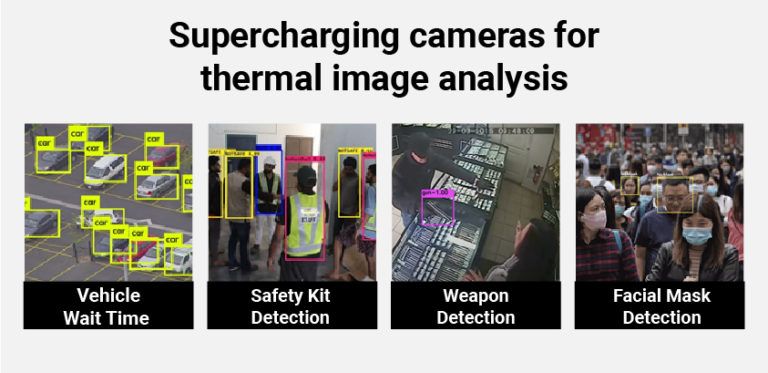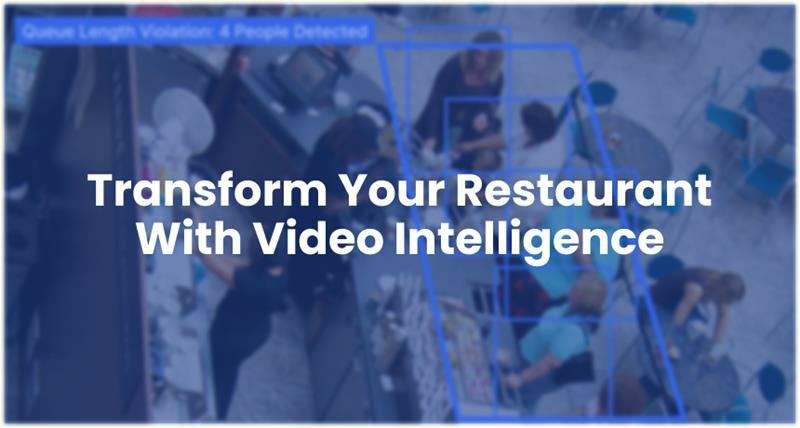Top 10 Computer Vision trends to look for in 2022
Written by Team Wobot

Thanks to the pandemic, businesses have witnessed transformation breakthroughs during the last two years that were to happen in the next 5 years. The technology adoption trend will continue to accelerate. It mainly consists of AI and intelligent industrial automation. Although businesses are still in the process of getting a firm grip over various AI technologies, computer vision will continue to open various technology horizons for hyper-digital dawn. Video intelligence- one of the most talked computer vision Technologies holds tons of value in the real world. According to Forbes, the computer vision market will reach USD 49 billion by 2022.

What is Computer Vision, and how does it function?
Computer vision is the ability of any computer to see and understand the world and make decisions based on their visual insights and rational understanding. In simple words, it automates and augments human sight in computers.
Video analytics or video intelligence powered by computer vision- received by categorizing and identifying the objects in the video with the help of bounding boxes are revolutionizing businesses and empowering them to mitigate risk, automate surveillance, superfine security and help them achieve operational efficiency.
The advances in computer vision dominated the year 2021. Let’s explore how it is going to perform in the upcoming year and the top 10 trends that are considered to lead the tech race during 2022.
1. Garner safety in public, private, and workplaces
Challenge: Businesses are slowly gaining momentum after the huge halt received by COVID-19. It is immensely important to ensure a safe organizational culture to withstand such a crisis in the future. The US federal agency OSHA (Occupational Safety and Health Administration) mandates employers to protect employees from workplace hazards that can cause any illness or injury. Organizations are facing hard times to adhere to this newly-defined and ever-changing safety and hygiene protocol and require a robust automated solution to ensure employees’ hygiene and safety.
Computer Vision for safety: Computer vision being the key business enabler, provides vision or video intelligence that is being utilized by many businesses worldwide to implement safety measures. Best-of-breed AI with Health, Safety and Environment (HSE) video event detectors supercharge cameras to automate monitoring and analysis. The video intelligence finds the events like the absence of a hardhat, safety vest or face mask or anything that causes the safety protocol breaches.
Undoubtedly it will strengthen the HSE initiatives in 2022.
2. Elevating quality analysis operations
Challenge: In a ruthlessly competitive market, quality failure is not an option. Countless production, packing and dispatch procedures must ensure that faults and abnormalities are continuously monitored. Manual monitoring is not well-equipped to rule out errors or faults, leading to substandard quality of products or services. It can cause irreparable damage to the brand image. With labor shortage and lack of technology expertise, many businesses are struggling to stay in the race.
Computer Vision for quality inspection: Computer vision can be a savior for businesses like food and beverage, automotive, manufacturing, retail etc., that have been observing shrinking labor and declining margins. Computer vision optimizes visual inspection to achieve better quality, accuracy, and flexibility at a very marginal cost.
3. Leveraging Edge Computing
Challenge: Businesses are highly prone to network failures. Lacking technology expertise, most of them fall flat to quickly process and analyze the humongous data they come across daily.
Computer Vision for Edge Computing: The most-talked topic of computer vision- Edge Computing- a distributed computing framework that brings enterprise applications closer to data sources such as IoT devices or local edge servers. It enables businesses to process and analyze a large amount of data more quickly at the site of collection. This leads to gathering actionable real-time analysis, insights and calculations. Software deployed on Edge computing automates and accelerates the cycle time and monitoring of labor-intensive processes. It quickly connects to cameras and Video Management Systems (VMS) to detect and prevent safety breaches in real-time.
4. Gathering and annotating data
Challenge: Many organizations use a manual workforce for data annotation. Manual annotation makes it tedious and complicated. It also brings in the probability of human error and hampers annotation quality and speed with increased cost.

Computer Vision for data/image/video annotation: The advancements in computer vision helps in automating the data labelling and future-proofing their training workflows. Various training workflows used by businesses today will seamlessly fuel data pipelines for faster activation of computer vision applications. It will accelerate data processing with minimum or no errors. 2022 will be the revolutionary year as we will witness an end-to-end automated annotation for images and videos.
5. Supercharging cameras for thermal image analysis
Challenge: The existing CCTV infrastructures in most businesses follow the 2D inspection and lack smartness. They are unable to provide visual insights like wait times, presence of metal or weapon detectors, absence of safety kit, hard hat, facial mask, etc. Lack of video intelligence and limited visible spectrum necessitate human or manual intervention to detect events.

Computer Vision for Non-destructive Testing (NDT): Computer vision-powered thermal cameras have night vision tools for surveillance and are augmented non-destructive testing. It helps to find events using radiology images taken through NDT techniques.
6. Leveraging SaaS video analytics solution
Challenge: The bottleneck of integrating video analytics solutions across businesses is the cost of implementation. The additional hardware and upgrade in the existing conventional surveillance system cost a bomb.
Computer Vision for Video Analytics on the go: With an explosive demand for video analytics solutions in 2022, businesses would be seeking robust software that is being trained using 300+ different parameters for highly sensitive tracking with minimum hardware or infrastructure upgradation expenses. Computer vision smartens up the video analytics solutions to get robust video insights with minimum or no falls alarms. This software is customizable, scalable and helps to save time and cost.
7. Implementing Computer Vision-based closed-loop solutions
Challenge: In a closed-loop system, the performing action depends on the system generated output. Implementing a closed-loop system on computer vision-based systems is challenging because of model accuracy and reliability issues.
Computer vision for the implementation of the closed-loop system: With everything is going autonomous, computer vision-based closed-loop systems or solutions like facial recognition are in huge demand. In the upcoming year, computer vision-based control loop solutions will be largely used in autonomous cars and unmanned vehicles. When conventional sources like accurate position/orientation data (e.g. GPS/IMU) are not available, computer vision uses visual feedback.
In 2022, multiple industrial use cases will be discovered and worked upon to implement closed-loop vision solutions in order to save time and increase production efficiency. It will autonomously control and adhere to the process parameters without interacting with the operator.
8. Implementing a proactive approach for event prevention
Challenge: AI-powered vision analytics solutions detect events and send alerts. However, they don’t have a sophisticated workflow of functioning to analyze the event in-depth to prevent it from repeating.
Computer Vision to understand the reasoning: Computer vision, when combined with the Machine Learning model, provides the reasoning behind the event or predictions without subjecting them to human interpretation. In 2022, computer vision will be combined with many other robust technologies, tools, or frameworks to unveil the reasoning behind the behavior and performance of the computer vision model.
9. Adopting 3D inspection
Challenge: Existing 2D inspection has its limitations and doesn’t provide video insights. It lacks a multi-layered security system because of which events may go unnoticed without any notifications.
Computer Vision for advanced perimeter monitoring: Computer vision-enabled 3D inspection provides automated surveillance insights through sensor data, video feeds and drone imagery. Based on a multi-layered security system, 3D inspection smartly detects intrusion, unidentified object, vehicle and user access control with accuracy and high speed of examination.
10. Bringing efficiency and transparency in Banking
Challenge: Although on a heel of digital disruption and implementation of advanced technology tools, banking is still falling prey to cybercrime and theft. Additionally, analyzing and processing monstrous and sensitive data are laborious activities that cease bank functions to outperform other domains.
Computer Vision for fast-paced data analysis and security: Optical Character Recognition (OCR) technology, a subset of computer vision, captures and extracts humongous financial or banking data quickly and efficiently from various documents or folders. In 2022, various computer vision technologies will be extensively used to perform mile-to-pay facial scanning, micro-expression analysis with virtual-loan officers, conversational bots for simple servicing requests, and humanoid robots. Biometric authentication and facial recognition with other Machine Learning tools will be used to prevent or detect cybercrime or fraud, scan and process documents and protect real-time transactions.
##Conclusion
According to Gartner, the global computer vision market size was valued at USD 11.32 billion in 2020 and is expected to expand at a compound annual growth rate (CAGR) of 7.3% from 2021 to 2028.
Undoubtedly in the hyper-digital Post-COVID industrial world, video intelligence is playing a key business enabler as government and other institutions are stressing vision-based inspection system implementation to prevent the crisis, ensure workers’ safety and leverage a hygiene-based economy. This clearly states that computer vision is here to stay and will keep ruling throughout the year in 2022.
Learn to identify, analyze and mitigate process deviations in real-time with video intelligence.
P.S. You’re signing up for value here. No spam. No overly promotional emails.
Related Blogs
See All









